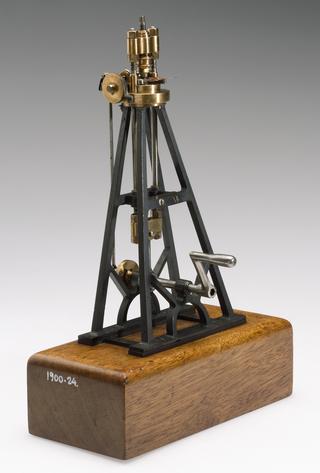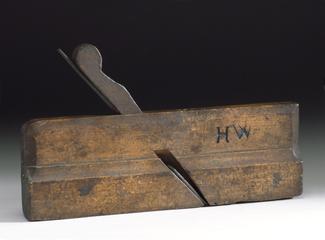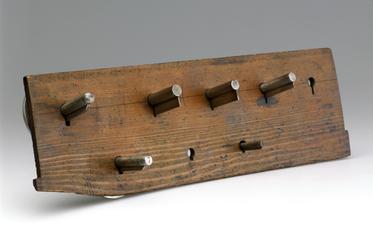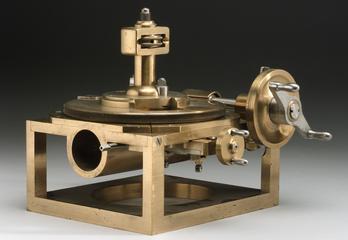
Threading dial from Willson 7 1/2" lathe
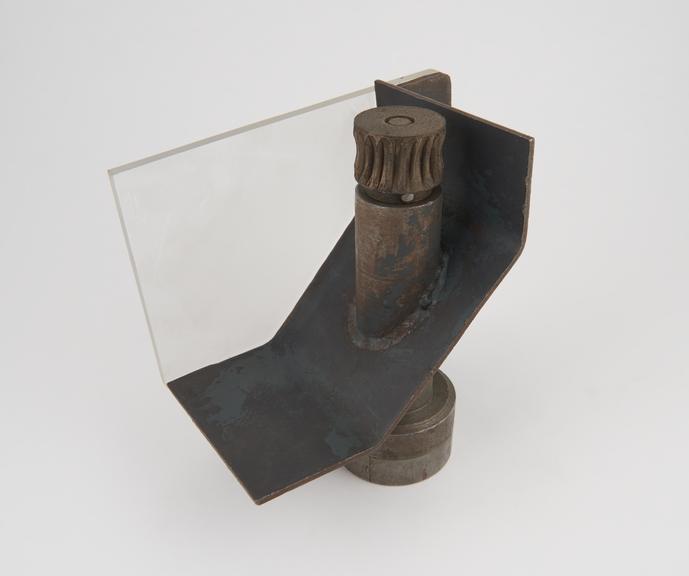
Threading dial from Willson 7 1/2" lathe
This is a lathe attachment for use when screw-cutting to indicate when it is safe to engage the half-nut with the lead-screw. It is attached to the carriage, and the worm-wheel is in mesh with the lead-screw, so that, when the carriage is stationary, the dial rotates. The rotation of the dial through one quarter of a turn as marked by adjacent numbers on the dial coming opposite a fixed line indicates a lead-screw rotation equivalent to a 1 in movement of the carriage.
After cutting the first thread it is safe to engage for a subsequent cut at any number of the dial, if the screw has a whole number of threads per inch. For half pitches the same or opposite number as was used in making the first cut must register. For quarter pitches the half-nut may be reengaged only when the same number comes opposite the zero line. Threads in simple relation to the lead-screw may thus be cut without recourse to marking the lathe. The threading dial was invented in 1894 by Franz Braun.
Details
- Category:
- Hand and Machine Tools
- Object Number:
- 1960-73
- type:
- lathes
- credit:
- Saunderson and Costin Ltd.
